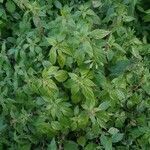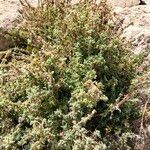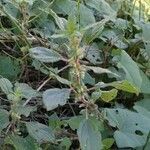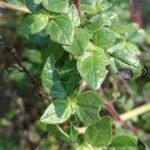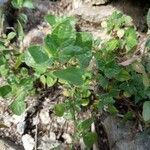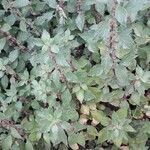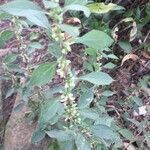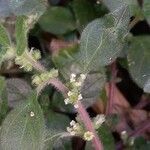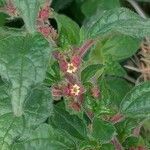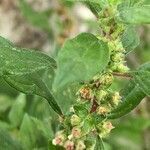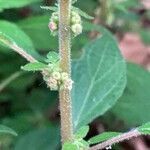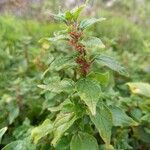Herbs , perennial from crown, 1-8dm. Stems ascending, erect, or decumbent. Leaf blades narrowly to broadly elliptic, lance-elliptic, or ovate, 1.3-9 × 0.8-4.5 cm, base attenuate, cuneate, or broadly rounded, apex abruptly acuminate to long-attenuate. Flowers: involucral bracts 1.5-2.5 mm; tepals ca. 2-3.5 mm, longer than bracts. Achenes dark brown, symmetric, 1-1.2 × 0.6-0.9 mm, apex acute, mucro absent or minute; stipe centered, on cylindric base.
Procumbent or ascending, densely hairy perennial. Stem red-tinged, usually much-branched, up to 60 cm long. Lvs thick, dark green, dull, ovate to elliptic, acute to acuminate, 1-4-(5) cm long. Petioles much < blade. Cymes congested. Bracteoles < perianth at fruiting, shortly connate at base. Perianth tinged red at flowering. Achenes ovoid, dark glossy green to black, 1-1.5 mm long.
A perennial herb which grows 60 cm tall. It spreads to 60 cm across. Male and female plants must be grown if seed is required. The leaves are oval and have hairs on the veins underneath. The flowers are green and in clusters in the axils of the leaves. The flowers are either male or female and borne on the same plant.
